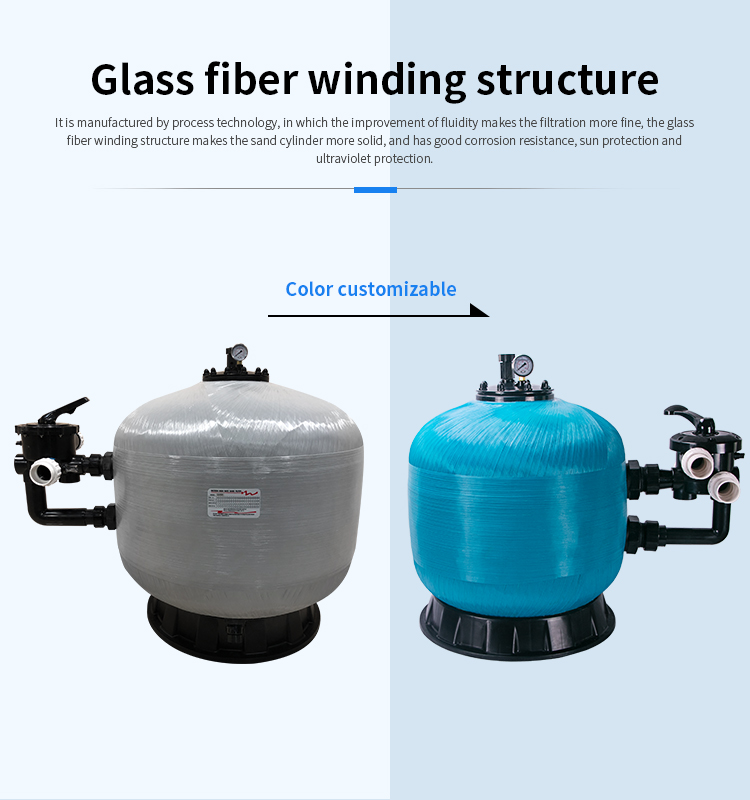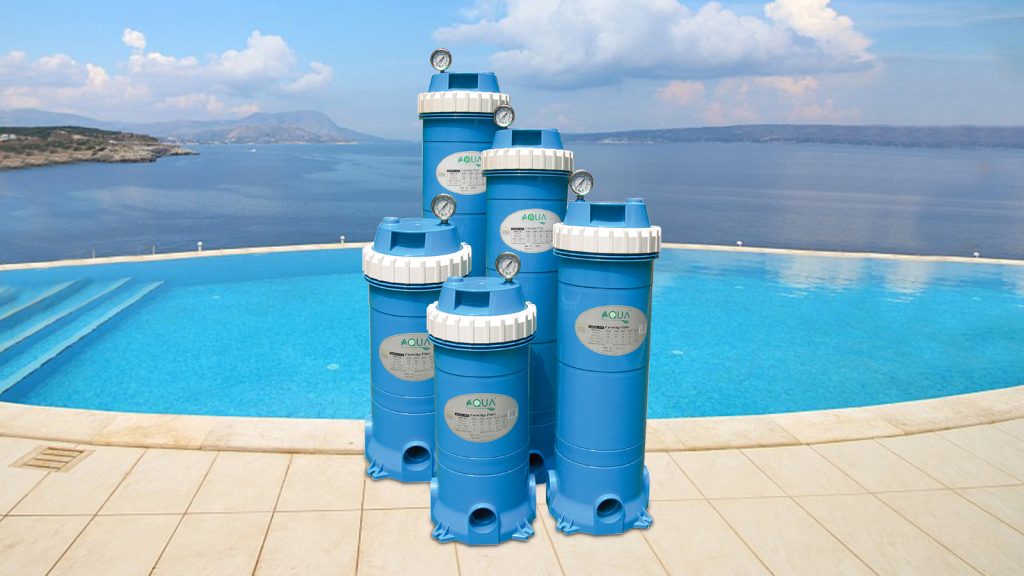There are many types of filter media for swimming pool filters. With the continuous advancement and innovation of technology, these media play an important role in the water purification process of swimming pools, amusement pools, leisure facilities pools and cultural performance pools. Different filter media have different filtering effects. The following is a brief description of the characteristics of several common filter media:
1.Quartz sand filter material:
Features: Quartz sand is a natural inert medium of silica, which is durable and has a long life. It has sufficient supply, low price, can adapt to the requirements of large changes in water quality, and the water quality after filtration is relatively stable, meeting the requirements of swimming pool filtration water quality. It is easy to operate, so it is widely used in swimming pool filtration.
Precautions: When the water temperature is high, the human body oil contained in the water can easily cause the quartz sand to harden. For public hot water massage pools, it is recommended to use a gas-water combined backwashing method. In addition, when the pH value of hot spring water is low, the spring water can easily dissolve quartz sand, which will cause the quartz sand particles to shrink continuously during operation, reducing the surface area of quartz sand, and thus affecting the filtration effect. If you encounter calcium sulfate pool water, it may cause the quartz sand to harden in a short time, resulting in filtration failure. Therefore, these two types of pool water quality are not suitable for quartz sand filtration.

2.Glass filter material (AFM filter material/crystal filter material):
Features: Glass filter material is made from recycled broken glassware through drying, screening, cleaning and other processes. Its average particle size is 0.6~0.8mm or 5~10mm, with high filtration accuracy and a slight positive charge on the surface. It can intercept impurities above 3.0μm in water, inhibit the growth of mold and moss, and reduce the use of chemicals. Glass filter material has a long service life, a smooth surface and high wear resistance, reduces the frequency of backwashing, and the backwashing water volume is 20% less than that of quartz sand. It is especially suitable for hot spring water baths and hot water baths.
Advantages: Glass filter material does not react chemically with pool water, has no crystalline silica, and has a protective effect on the environment and human lungs. Its specific gravity is smaller than that of quartz sand, and the filling volume in the filter is about 20% less than that of quartz sand.
Disadvantages: Since glass filter material needs to be processed, its cost is higher than that of quartz sand.
3.Diatomaceous earth filter media:
Features: Diatomaceous earth filters by forming a filter membrane on the surface of the filter screen. It has high filtration accuracy and can filter out suspended and solid impurities of 1~3μm, which is called ultrafiltration (UFF). Diatomaceous earth filters are small in size and require less backwashing water. However, some diatomaceous earth will be lost during the backwashing process, and filter media needs to be added continuously. Its cost and maintenance cost are high, so it is rarely used in swimming pools. It is usually used in places with high water quality requirements.
Precautions: Because the oil secreted by the human body in a high temperature environment will reduce the filtration efficiency, emulsified lipids can penetrate the filter medium layer under high alkalinity water conditions, so it is not recommended to use diatomaceous earth filters in hot water and hot spring water baths.
Paper core and fiber core filter media:
Features: It is a cylindrical filter element made of special paper or specially treated polyester fiber pleats. Single or multiple filter elements are installed in a closed and impact-resistant metal or plastic cylinder. The water to be filtered is sent into the cylinder, so that the pool water passes through and penetrates into the filter element to achieve the water purification effect. The folded pleat design increases the filtration area and enhances the pollution interception ability.
Disadvantages: Paper core filters cannot be backwashed and need to be cleaned manually. The service life is short and the filter element needs to be replaced frequently, so it is not suitable for large swimming pools.

Perlite filter aid:
Features: Perlite filter aid is made of perlite ore, which is lightweight and porous, with a porosity of up to 90%~95%. It has a fast filtration speed, strong pollution interception ability, high transparency of filtered water quality, small backwashing water consumption, and saves water resources.
Disadvantages: Perlite is light in texture and will be lost during backwashing. Like diatomaceous earth, it needs to continuously add filter material. The cost and maintenance cost are similar to diatomaceous earth, but the filtration accuracy is not as strong as diatomaceous earth. Therefore, perlite filter aid is rarely used in swimming pools.
To sum up, when choosing swimming pool filtration equipment, you need to consider many factors such as water quality characteristics, usage environment, cost budget, and maintenance requirements to find the most suitable filtration solution.
Foshan Guanya Swimming Pool Equipment Co., Ltd.
TEL/WhatsApp: +8613049167131

